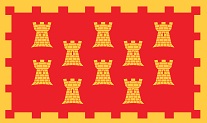

 Here are the details of maps for Milnrow:
Here are the details of maps for Milnrow:

This detailed map covers most of the town of Milnrow, plus its neighbouring village of Newhey (or New Hey), both now in Rochdale MBC.
Features in Milnrow include Butterworth Hall area, Butterworth Hall Colliery and tramway, coke ovens, Lady House area, New Lady House Mill, Perseverance Mill, Albion soap works, Providence Mills, Buckley Hill House, Albert Mills, UDC Offices and Library, Cliffe House, railway with station. (Note that Milnrow church is off the map to the north). Features in Newhey include station, Ellenroad Mill, Garfield Mill, Two Bridges Mill, New Hey Mill, Haugh Mills, St Thomas's church, brickworks, etc.
The map links up with Lancashire Sheets 89.05 Rochdale South to the west.
Further information:
This map covers most of Milnrow and Newhey, towns that retain much of their old character, and which are sometimes said to be at the heart of the Lancashire dialect. Many old weavers' cottages survive as a reminder of their earlier industrial history, but they later became modest mill towns, while Butterworth Hall Colliery was in Milnrow.Between 1912 and 1932 Milnrow had trams, and these would later return with Metrolink, replacing the former Lancashire & Yorkshire line, which had stations in both towns. From 1894 Milnrow had an urban district council, with a group of muncipal buildings, including a handsome library. Milnrow lost its independence in 1974 when it became part of Rochdale MBC.
"The first 6 inch Ordnance Survey map, surveyed in 1844-48, shows Milnrow as a distinctively woollen town, with three woollen mills – Providence Mill, Church Street Mill and, further south, Butterworth Hall Mill, and just the one cotton mill, Lady House Mill. Of these the Church Street mill would later be replaced by the cotton mills shown here while the small Butterworth Hall Mill, in plot 408, would disappear. In neighbouring Newhey cotton spinning was recorded at Two Bridges Mill in 1845 but that early OS map suggests that it was already making inroads, with Salt Pyke, New Hey (where there was a major explosion in 1847, with seven people killed), Lower Two Bridge, Higher Two Bridge and Haugh cotton mills all named; all however were small and the larger mills shown here generally date from the late 19th century, as mentioned above. By the time of our map cotton was clearly ‘king’, and in 1911 Newhey had ten mills with 222,492 mule spindles and 88,500 ring spindles, with some 2,000 employees coming in each day to staff them."